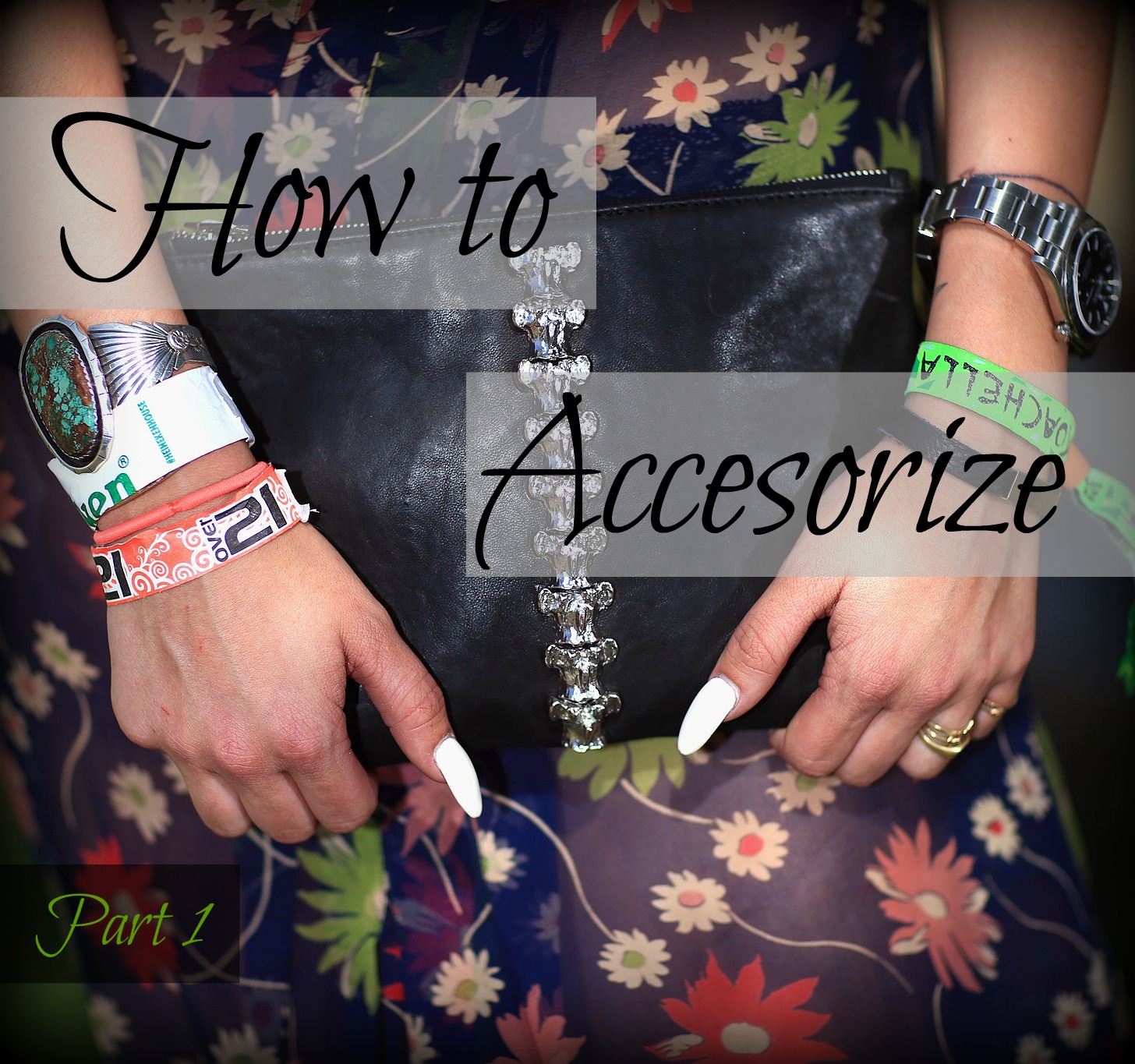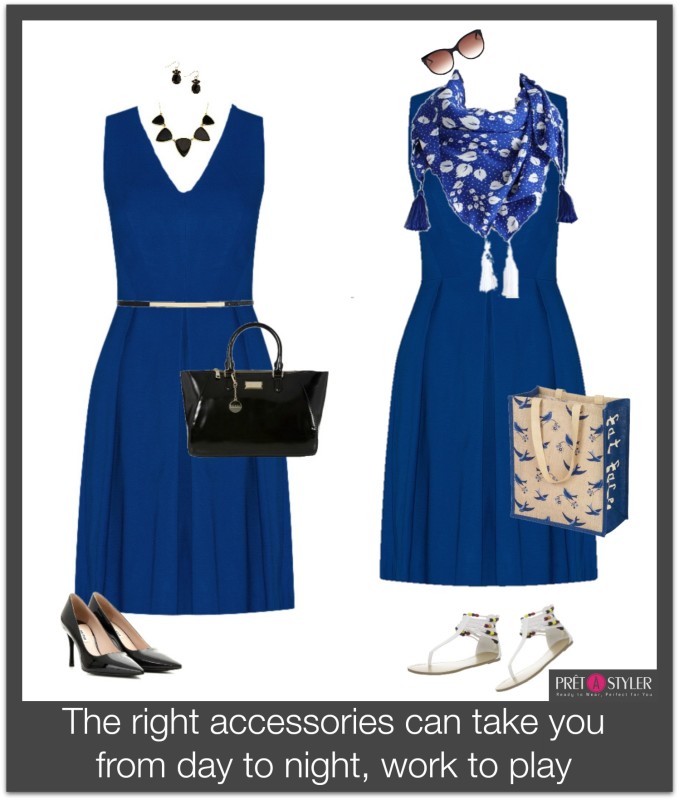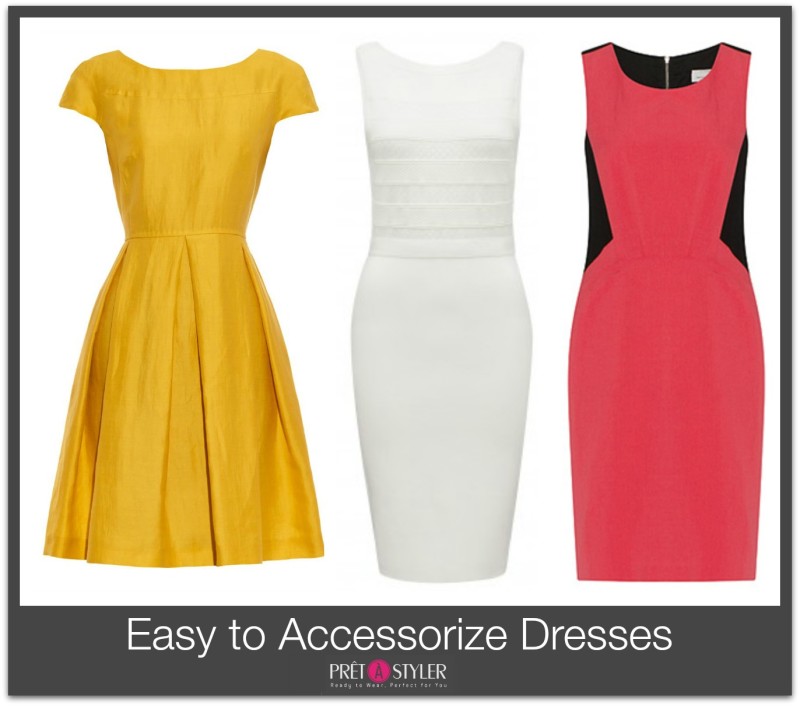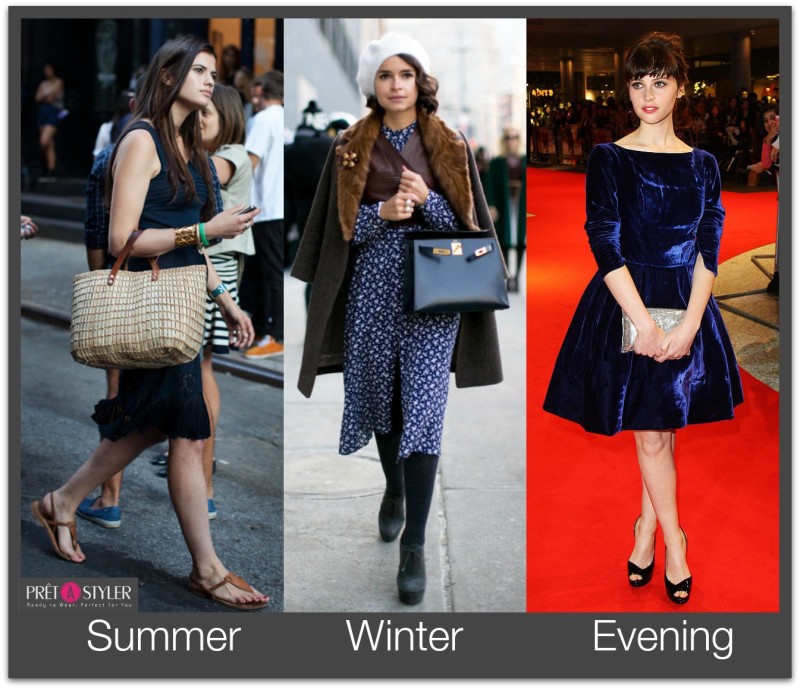
Why Accessorize?
- To create different moods: From polished professional to cafe charisma, all it takes is the right accessories.
- To dress up or down: From a lazy weekend lunch with the girls to dinner to a Broadway show with your man.
- To add personality: Some accessories will speak directly to your style personality and the more you express the authentic you through your clothes the more relaxed and happy you’ll be with your image.
- To play-up your assets: Great boobs, tiny waist or shapely arms – whatever you assets accessories can highlight them.
- To direct attention: OK, we all have areas that are not what we’d consider our best features; accessories can be used to draw attention to other areas. If you don’t like an area, don’t accessorize it.
- To make Fashionable: As long as the dress is free of any distinct fashion date adding this seasons trend accessories will instantly update the dress.
- To have fun: Dressing should always be fun – if not we may have well wear a bag! Don’t be afraid to express a touch of fun, just be mindful of appropriateness.
Start Simple
The simpler the garment the easier it will be to accessorize it to produce the greatest number of different looks and occasions it can be used for. A dress is one of the most complex garments to accessorize so let’s start with it and work down to other items.
- Clean lines: a dress with lines that flow freely over your body from neck to hemline uninterrupted by too many seams, ruching, draping etc. The biggest challenge to accessories is clutter, complexity. The simpler your dress, more versatile it will be and the easier it will be to accessorize to change its look and mood.
Clean, Simple Lines = Lots of Possibilities
- Tailored: a dress that has some shape/fitting. A semi-fitted style will deliver you a form-flattering shape while being appropriate to most occasions and lifestyles.
- Sleeveless or Short Sleeve: a sleeveless or cap sleeve dress will allow for the widest selection of accessories to be added.
- Minimal to Unembellished: The more details on the dress such as collar, pockets, ruffles etc the fewer options you will have to dress it up and down with accessories.
- Solid Color (or close to it): as you’ll learn you can successfully accessorize a patterned dress but it take a little more strategy. Solid colored dresses allow you unlimited scope to play and experiment with accessories.
- Medium Depth Color: a medium-light to medium-dark color is the easiest value range to wear as it suits everyone and can easily be transformed from day to evening wear.
- Classic Neckline: scoop, V and square necklines allow for many styles and lengths of necklaces. Unusual necklines and collars are more limiting.
- Above Cleavage Neckline: an appropriate, take you anywhere, flattering depth.
- Midi Length: just above the knee to mid calf will be flattering and versatile.
Timed Right
Many accessories are best suited to a certain time of the day, occasions or seasons. Sparkly earrings, multiple strand pearl chokers and rhinestone studded clutches are items that are most appropriate for evening wear while canvas bags, straw hats and shell jewelry will look odd with winter attire. The material that the item is made of and/or its surface are the characteristics that most often links it to a particular season, time of day or level of formality. Generally speaking, the shinier the item, the more formal/dressy it will appear to be add sparkle and the item will be best suited to after dark wear. Accessories with matte surfaces are commonly casual and many are linked in some way to nature making them most suitable for day wear. Winter accessories are often fluffy, furry, heavy, closed, dark or bright. Summer accessories are lightweight, flowing, flat, open, light or bright colored. Color too has its place to play. As winter turns to spring and the temperature starts to increase we see the appearance of pastels and soft, water-color prints. As spring turns into summer colors become progressively righter or spicy to compliment the heat. It’s in summer when we see the emergence of white being used in entire outfits.
Summer Daytime Accessories
- Fabrics: Those that breathe and are light to medium weight. For example cotton, silk, chiffon, muslin, linen and gauze.
- Jewelry: Natural materials, including, cork, wood, stones, leather thongs, colored enamels and bone.
- Scarves: Lightweight and fluid. For example, silk, chiffon and gauze.
- Hats: Straw, canvas, fabric, baseball styles and wide brims.
- Shoes: Light weight and/or open – mules, sandals, toe post (thongs), espadrilles, sling backs, open toe and canvas boat/sneaker styles.
- Bags: Light weight fabric totes, crocheted, straw, canvas, see-through or transparent plastic.
- Hosiery: Sheer, neutral or pale colors and ankle decorations.
- Eye wear: (Sun glasses) – Tortoiseshell, wrap around styles, larger and more decorative frames.
- Make-up: Light and natural giving a youthful, fresh less contrived appearance.
Winter Daytime Accessories
- Fabrics: Denser and more tightly woven. Colors are rich, dark and accented with vivid hues. For example, velvet, corduroy, heavy silks, brocades, tweeds, plaids, paisley and felt. Animal prints re-emerge in felt and fur.
- Jewelry: Predominantly jewelry is metallic, gold or silver solid or inlaid with precious and semi-precious stones.
- Scarves: Heavier weight silks, wool, felt, fur and chenille.
- Hats: Styles worn close to the head (for warmth) and made of wool, felt and chenille etc. Berets, Tam-o’-shanters, Fedoras, Crushers, Cossack styles, Beanies and Cloches.
- Shoes: Closed (showing little of the foot) – boots, high vamp shoes, lace-ups and closed court shoes.
- Bags: Leather predominates – animal skins, suede, patent leather and the occasional felt bag, are all examples.
- Hosiery: Medium to opaque in medium density. Medium to dark colors as well as patterns and textures.
- Make-up: Medium intensity, highlighting the eyes or the mouth, defined but not over powering.
Evening Accessories
Evening is the time when you can let your dramatic, romantic or sultry impulses run wild. Everything is intensified; the strength of color you wear for clothes and make-up, and the degree of luminescence.
- Fabrics: Fabrics that shine or sparkle, such as those run through with metallic thread or those adorned with sequins and rich looking fabrics such as velvet. Colors are vivid e.g., cobalt, fuchsia and deep periwinkle or sophisticated e.g., black, silver grey and pale rose pink.
- Jewelry: Anything that glitters or calls attention to the face e.g., gemstones and rhinestones. Or that which has a sophisticated evening elegance e.g., two strand set of pearls, twisted together and joined by a large gold and diamond clasp. Earrings that are medium to large with drop style being the most popular.
- Scarves: Silk, lame, chiffon, ostrich, velvet and brocade seductively draped over the body.
- Hats: Decorative and small.
- Gloves: Fine, black or white, elbow length.
- Shoes: Strappy, high and delicate in shiny fine leather, fabric or metallic. Shoe ornaments e.g., clips may be present.
- Bags: Small to medium – leather, fabric, beaded or sequinned.
- Hosiery: Sheer, either shiny or patterned in nude or dark colors.
- Make-up: Intensified (to counteract the harsh effect of artificial lighting) and sultry to create a dramatic, formal, sophisticated or seductive look.
- Hair: Swept up, full and bouncy or slicked back with gel.
The Mood of Accessories
Movie costume designers skilfully design the exact look for each individual character. So much so, that within a few seconds and without the actor uttering a single word you already know a great deal about the character they are to play — young, old, wealthy, poor, intelligent, stupid, sophisticated, artistic, sinister, immature and so on. It’s all to do with the way they are dressed and accessorized. With a little knowledge you too can control the look, mood, quality, character and attitudes you are seen to possess by the skillful adaptation of accessories.
Here are a few different looks you can obtain by working with color and accessories.
To look confident, inspiring, stimulating and to be noticed: Wear light or dark colored outfits and accessorize with items that are bright or in a contrasting or complementary color.
To look lively, fun or inspiring: Wear medium-light to medium toned outfits in warm colors and add bright colored accessories.
To Look energetic, eye catching and to attract attention: Wear medium toned garments and bright accessories.
To look friendly and approachable: Wear medium muted, warm colored outfits and accessorize with soft, slouchy bags and tactile scarves etc.
To look dramatic, powerful, dignified or formal: Wear outfits that comprise of mostly dark tones and add light colored accessories.
To look sophisticated and elegant: Wear outfits and accessories in closely related colors; medium to deep (not dark) colors.
To look feminine, gentle and friendly: Wear outfits that comprise of light tones and add delicate accessories in the same tonal value.




When the information is broken down in this way it makes it seem achievable.
Thank you Jennifer. Not having been blessed with an innate styling ability, I had to research the how and why of everything before I could fully’get-it’.
I have found that if you know ‘why’, can you proceed confidently to ‘how’.
[…] the timing of accessories, selecting an accessory that harmonizes with your outfit in weight will create a pulled together […]
[…] items and add accessories that uphold and express your personal style expression. Whether it’s a frame bag from the 50s […]
[…] How to Accessorize: part 1 […]
Wow super helpful information. I have a lot of navy tops, they suit me (top heavy, soft summer colour type), but I always feel I don’t look very approachable but didn’t know why. Now I am going to try the medium muted look (as warm as I can go) and try lightening the navy look as well. Thanks!
You are very welcome Leesa.